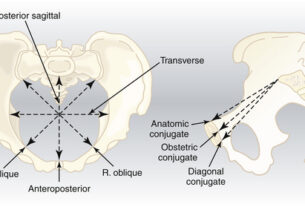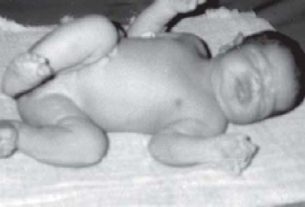One of the greatest miracles of life is the birth of a newborn, their arrival marking the beginning of a beautiful journey.
But what about those special little ones who take their time in the womb, defying the confines of a typical pregnancy?
Enter the world of post-term infants, babies who come into this world after 42 weeks of waiting.
In this article, we explore the unique characteristics of these babies and the extraordinary measures taken to ensure their safe arrival and optimal health.
Step into a realm where time is stretched, and discover the marvels of postmaturity.
post term infant
A post-term infant refers to a baby born after 42 weeks of pregnancy.
Postmaturity is relatively uncommon, as very few babies are born at 42 weeks or later.
The reasons for some pregnancies lasting longer than others are unknown.
The most accurate way to determine the due date of a pregnancy is to undergo an ultrasound in the first trimester.
Mothers who have previously had a post-term pregnancy are more likely to experience postmaturity again.
Symptoms of postmaturity include dry, peeling skin, overgrown nails, and visible creases on the palms and soles of the feet.
Diagnosis is based on the physical appearance of the baby and the length of the pregnancy.
Tests such as ultrasound, nonstress testing, and checking amniotic fluid levels may be performed.
Treatment may involve inducing labor early depending on the baby’s health and any complications, monitoring the baby’s heart rate during labor, and potentially requiring a cesarean delivery.
Special care for post-term babies may include checking for breathing problems and conducting blood tests for low blood sugar.
Key Points:
- A post-term infant is born after 42 weeks of pregnancy and is relatively uncommon.
- The reasons for pregnancies lasting longer are unknown.
- Ultrasound in the first trimester is the most accurate way to determine the due date.
- Previous post-term pregnancies increase the likelihood of postmaturity.
- Symptoms of postmaturity include dry, peeling skin, overgrown nails, and visible creases on the palms and soles of the feet.
- Diagnosis is based on physical appearance and length of pregnancy, with tests such as ultrasound and checking amniotic fluid levels.
- Treatment may involve inducing labor early, monitoring heart rate during labor, and potentially requiring a cesarean delivery.
- Special care for post-term babies may include checking for breathing problems and conducting blood tests for low blood sugar.
post term infant – Watch Video
💡
Pro Tips:
1. Post-term infants, also known as “postmature” infants, are babies born after 42 weeks of gestation, exceeding the typical 40-week pregnancy period.
2. Despite being born later, post-term infants may not necessarily be larger than babies born at full-term. The placenta’s ability to provide nutrients decreases after 40 weeks, which may result in a smaller baby.
3. According to research, post-term infants have a higher risk of experiencing certain health complications, such as meconium aspiration syndrome, where the baby inhales amniotic fluid containing meconium (the baby’s first bowel movement).
4. Post-term infants often have dry, flaky skin due to a decreased production of vernix caseosa, a greasy, protective substance that usually covers a baby’s skin in the womb.
5. While most babies shed their lanugo (fine hair) during the third trimester, post-term infants may still have patches of lanugo present on their bodies at birth.
Definition Of Postmaturity In Infants
Postmaturity refers to babies who are born after 42 weeks of pregnancy. It is important to note that while the average length of pregnancy is around 40 weeks, some pregnancies continue beyond this period, leading to post-term births. Post-term babies, those born at 42 weeks or later, are relatively uncommon.
Key points:
- Postmaturity refers to babies born after 42 weeks of pregnancy.
- The average length of pregnancy is around 40 weeks.
- Some pregnancies may continue beyond 40 weeks, resulting in post-term births.
- Post-term births, occurring at 42 weeks or later, are relatively uncommon.
“Postmaturity refers to babies who are born after 42 weeks of pregnancy.”
Frequency Of Post-Term Births
Although post-term births are rare, occurring in only about 5-10% of pregnancies, it is important to understand their occurrence. The majority of babies are born between 38-42 weeks of gestation. However, post-term births are more likely in specific populations or with certain risk factors. Nonetheless, the exact reasons for the length of some pregnancies remain unclear.
Factors Influencing Duration Of Pregnancy
The duration of pregnancy can be influenced by various factors. First-time mothers tend to have longer pregnancies compared to women who have had previous pregnancies. Additionally, certain ethnicities, such as Asian and African-American, have been observed to have shorter pregnancies compared to Caucasian women. However, there is no definitive explanation as to why some pregnancies extend beyond the typical 40-week gestational period.
The factors influencing the duration of pregnancy include:
- First-time mothers tend to experience longer pregnancies.
- Certain ethnicities, such as Asian and African-American, have shorter pregnancies compared to Caucasian women.
It is important to note that despite these observed patterns, there is still no definitive explanation for why some pregnancies extend beyond the typical 40-week gestational period.
“There is no definitive explanation as to why some pregnancies extend beyond the typical 40-week gestational period.”
Importance Of First Trimester Ultrasound
To accurately determine the date of pregnancy, it is recommended for expectant mothers to undergo an ultrasound examination during the first trimester. This procedure provides the most accurate estimation of gestational age by measuring the size of the fetus. By determining the exact date of conception, healthcare providers can better monitor the progress of the pregnancy and identify any potential issues, including postmaturity.
Previous Post-Term Pregnancy And Its Link To Postmaturity
Mothers who have previously experienced a post-term pregnancy are more likely to have another post-term birth in subsequent pregnancies. This correlation suggests that there may be underlying factors that contribute to both the extended duration of pregnancy and the development of postmaturity. However, the specific reasons for this link remain unclear and further research is needed to fully understand this association.
Symptoms Of Postmaturity In Newborns
Postmature infants may exhibit several physical characteristics that differentiate them from babies born at the normal gestational period. These symptoms can include:
- Dry, loose, and peeling skin
- Overgrown nails
- A large amount of hair on the head
- Visible creases on the palms and soles of the feet
- A small amount of body fat
- Green, brown, or yellow coloring of the skin due to the baby passing stool in the womb
- Increased alertness and a “wide-eyed” appearance
These distinctive features help identify postmature infants and can aid medical professionals in providing appropriate care and support.
Diagnosis Of Postmaturity
The diagnosis of postmaturity is primarily based on the physical appearance of the baby and the length of the pregnancy. Healthcare providers will assess the baby’s physical characteristics and compare them to the expected developmental milestones for the given gestational age. If the baby demonstrates symptoms of postmaturity and the pregnancy has reached or extended beyond 42 weeks, a diagnosis of postmaturity may be made.
- Key factors for diagnosing postmaturity:
- Baby’s physical appearance
- Length of the pregnancy (beyond 42 weeks)
“The diagnosis of postmaturity depends on evaluating the baby’s physical characteristics and comparing them to the developmental milestones for the gestational age.”
Tests For Assessing Postmaturity
In certain cases, healthcare providers may perform additional tests to assess the well-being of a postmature baby. These tests can include:
- Ultrasound examinations to evaluate the baby’s growth,
- Nonstress tests to monitor the baby’s heart rate,
- Assessments of the amount of amniotic fluid surrounding the baby.
These tests help healthcare professionals make informed decisions regarding the appropriate management and care for postmature infants.
Treatment Options For Postmature Infants
The treatment of postmature infants is dependent on the baby’s health and any potential complications that may arise. In certain cases, healthcare providers may opt to induce labor early in order to minimize further risks to the baby. Monitoring the baby’s heart rate during labor is of utmost importance to ensure their well-being. Additionally, in specific circumstances, a cesarean delivery may be required to ensure the safest delivery of the postmature baby.
Special Care Considerations For Post-Term Babies
Post-term babies, infants born after 42 weeks of gestation, often need special care due to the potential challenges they may encounter. Healthcare providers play a vital role in closely monitoring these babies for any breathing difficulties. Breathing problems can be a concern for post-term infants, and early detection is crucial for prompt intervention.
Another common issue that post-term babies may face is low blood sugar levels. Healthcare providers regularly conduct blood tests to check for this condition, as maintaining optimal blood glucose levels is essential for the baby’s well-being. Regular monitoring and intervention are necessary to prevent any complications related to low blood sugar levels in post-term infants.
Breastfeeding can also be challenging for post-term babies during the initial days. These infants might have difficulties latching on or establishing a nursing routine. Therefore, additional support and assistance may be required to ensure successful breastfeeding for post-term babies. Expert guidance from lactation consultants or specialized healthcare providers can significantly help overcome these breastfeeding challenges.
In conclusion, the health and well-being of post-term infants require special attention and care. Healthcare providers play a crucial role in monitoring and addressing breathing problems, conducting blood tests to check for low blood sugar, and providing additional support for breastfeeding. By providing the necessary care and intervention, healthcare professionals can contribute to ensuring the optimal growth and development of post-term babies.
💡
You may need to know these questions about post term infant
What is a post-term infant?
A post-term infant refers to a baby born after a gestational age of more than 42 weeks or 294 days from the first day of the last menstrual period. These infants are at a higher risk of experiencing complications and health issues compared to those born at term. The increased rates of morbidity and mortality associated with post-term infants underline the importance of closely monitoring and providing appropriate care for these babies to ensure their well-being.
What are the characteristics of a postterm baby?
Postterm babies display distinct characteristics due to their extended time in the womb. Their skin tends to be dry, peeling, and loose, sometimes appearing excessively thin if the placenta’s functioning was significantly compromised. Their nails, both fingernails and toenails, are notably long. Another noticeable feature of postterm babies is the potential green staining of the umbilical cord and nails, which could occur if there was an excessive amount of meconium in the amniotic fluid.
What happens to baby that is post-term?
When a baby is post-term, it means that it has stayed in the womb beyond the usual 40 weeks of pregnancy. This can lead to certain risks for both the baby and the mother. In terms of the baby, there is a slightly increased chance of stillbirth or infant death. Additionally, the prolonged growth of the baby can pose difficulties during the birth process, especially if the baby becomes large. In rare cases, the baby may experience inadequate nourishment and fail to continue growing properly.
What is considered a postmature infant?
A postmature infant is a baby who is born after 42 weeks of gestation or 294 days past the first day of the mother’s last menstrual period. This is considered a relatively rare occurrence, as less than 6 percent of all babies are born at this late stage. Being born postmature can potentially pose risks to the newborn, such as placental insufficiency and meconium aspiration, making careful monitoring and medical intervention important for the well-being of the baby.
Reference source
https://www.uptodate.com/contents/postterm-infant
https://www.msdmanuals.com/home/children-s-health-issues/general-problems-in-newborns/postterm-newborns
https://www.uptodate.com/contents/postterm-pregnancy-beyond-the-basics
https://www.chop.edu/conditions-diseases/postmaturity



